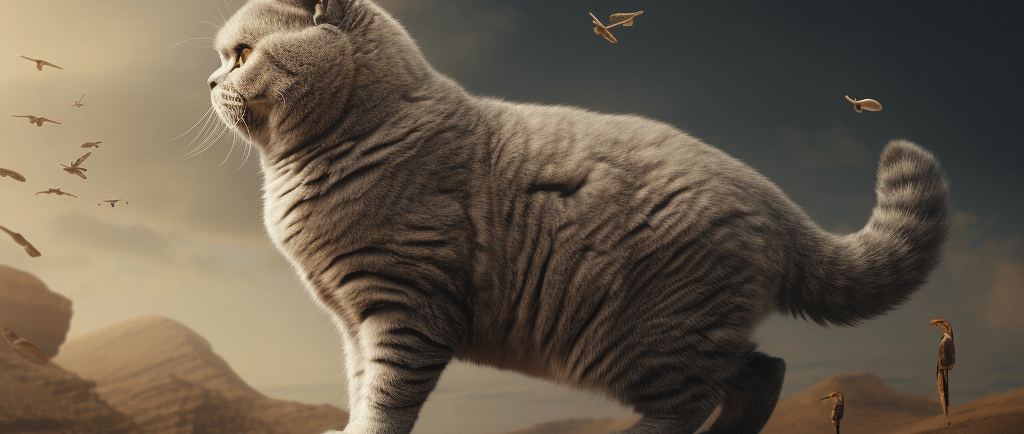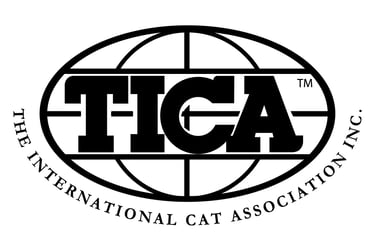Munchkin Line coming soon!
The British Shorthair Cat: Explore Unique Facts and Origins
Discover fascinating facts and origins of the British Shorthair cat breed, known for its unique characteristics and history.
7/11/20244 min read


The British Shorthair Cat: Facts You May Not Have Known
Let's take a look at what makes the British Shorthair cat such a popular choice in the United States.
In the United States, British Shorthairs are among the most common pedigree cats you'll come across. As adults, they retain the chubby appearance and distinctive features that made them popular as kittens. They are fantastic with everyone since they never lose their sense of humor while maturing into a more relaxed person.
Because of their mild demeanor and friendly disposition, these felines may easily become part of your family. They may also play alone with the finest cat toys. They are very devoted, making invaluable contributions to the households who take them in.
There is plenty to be said in favor of the British Shorthair cat, so let's dive into these 10 interesting and important details you probably didn't know.
#1 Big cats, for one thing
The British Shorthair is a robust cat breed with thick muscles and strong bones. They aren't as big as Ragdolls or Main Coons, but they're still not the type of pet cat you can just pick up and hug whenever the mood strikes you. They require enough of the finest kitten food from the get-go so they can reach their full potential as round and chunky adults.
#2 They're quite ancient and very popular among cat lovers.
Popular U.S. manufacturer of cat food According to Purina, this kind of cat has been around since at least the first century AD, when the Romans brought them in to employ as vermin and bug control in their military barracks. This would place the British Shorthair among the world's oldest recognized cat breeds.
#3 Thirdly, they develop slowly.
British Shorthairs take their time developing physically and cognitively. They mature into their full size and weight between the ages of three and five, while certain characteristics associated with kittenhood, like as high activity, may persist into maturity. If you're worried that you won't be able to manage a British Shorthair's enthusiasm, be assured that they develop into calm, friendly pets.
#4 Originally, they were azure blue.
Historically, the British Shorthair was known as the British Blue when they were intentionally cultivated for their distinctive blue-gray coats in the 19th century. However, they are now available in many other hues.
#5 They make wonderful pets for the home.
You can't go wrong with a British Shorthair if you want a cat that's adaptable enough to live with kids and other pets. The British Shorthair cat breed is well-liked because of its gentle temperament, placid demeanor, and undying devotion to its human family. The British Shorthair is the perfect cat for a family with children since it is calm enough to deal with the occasional noise and turmoil, but yet kind enough not to respond forcefully if a little child is driving them up the walls.
#6 No extensive grooming is necessary for them.
If the name didn't give it away, a British Shorthair cat has short hair and requires just weekly or so of maintenance. The only time you'll need to pay extra attention to these cats' coats is during their seasonal shedding periods, when you'll want to vacuum up the extra hair or vacuum often.
#7 Their health is generally excellent.
Certain breeds of cats, like any others, will be predisposed to certain diseases. Fortunately, British Shorthairs don't have to worry about a lot of hereditary illnesses. Cats of this breed have a reputation for surviving for 14 to 20 years or more if their owners take good care of them, as reported by LV Pet Insurance.
LV also highlights the breed's relatively few health concerns, such as Hyperthyroidism, which is more common in elderly British Shorthairs and manifests as an overactive thyroid gland that may wreak havoc on the cat's metabolism. Shorthair cats are more prone to getting cataracts, which may cause blindness in senior cats, and they also have a higher chance of acquiring heart disease due to their genetic composition. All of these are potential catastrophes, but if you take good care of your British Shorthair, you shouldn't have to take him to the vet very frequently.
#8 They tend to gain weight easily.
The British Shorthair, like other cats, is prone to becoming overweight if it is fed too much food and doesn't receive enough activity. Because of their greater stature, they need to consume more food to keep from becoming overweight. Owners should use caution to avoid overfeeding their pets. Maintaining your pet's health and preventing excessive weight gain may be accomplished via proper feeding and routine veterinary care.
#9 Their eye hues coordinate with their fur patterns.
The majority of British Shorthairs have blue coats, and their beautiful orange eyes sometimes have a glimmer of gold. Nonetheless, different colored British Shorthairs may have a wide variety of eye colors.
#10 The breed was once in danger of being lost forever.
The British Shorthair lost popularity in the early 20th century as pet owners flocked to more exotic breed imports like the Persian. The population of British Shorthairs had become dangerously low by the conclusion of World War II, prompting worried breeders to take action. It wasn't until the 1970s that the British Shorthair's population started to grow again, and now the breed is once again among the most popular in the United States.





